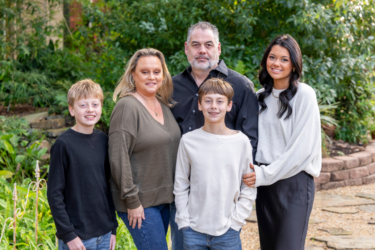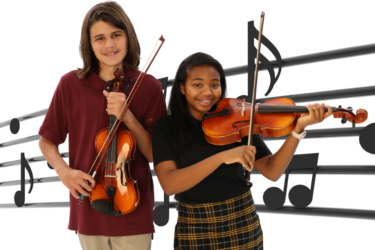Every child grows and develops within their own timeframe. As a parent, it can be difficult to remember not to compare your child’s progress to the children of your relatives or friends. One child may begin speaking early on, while another child may take more time. Rolling over, crawling, walking, and talking are all considered milestones. While the metric for measuring your child’s progress seems black and white, it is in no way a predictor of your child’s intelligence, talents, or future successes.
Childhood milestones are different for each age range. These milestones develop over time, forming the foundation for growth and continued learning. In this guide, we explore the early childhood milestones, what they mean, and how to track them.
DEVELOPMENTAL MILESTONES FROM 2 MONTHS TO 2 YEARS
YOUR BABY AT 2 MONTHS
At two months, your baby is smiling at faces and taking in their new world. Babies at this age are social and love to interact with their parents. Their neck muscles are growing bigger and stronger, and they can hold their heads up for a longer time. They can identify and understand the tone, emotions, and comfort in your voice.
What your baby is learning
While every baby is different, here are a few common milestones your baby may reach in this age group:
• Lifts head when on stomach
• Moves arms and kicks
• Reacts to noises and understands voices
• Cries and fusses
• Starting to look closely at objects
• Begins to smile at people
If you want to encourage your baby’s development during this time, experts recommend:
• Singing
• Talking and smiling at your baby throughout the day while bathing, dressing, feeding, or playing with your baby
• Playing new sounds for your baby
• Reading books out loud
• Looking into a mirror with your baby
YOUR BABY AT 4 MONTHS
At 4 months, your baby is growing into even more of a social butterfly. Babies at this age love to make sounds like babbling, cooing, and mimicking other sounds they hear. They love to play and copy the movements of others. Also, your baby’s cries will begin to sound different as they learn to use their voice to communicate between tiredness, hunger, discomfort, and frustration.
What your baby is learning
Here are some milestones your baby may reach during this developmental period:
• Smiles on their own
• Chuckles
• Looks at parents, moves, or makes sounds to get attention
• Makes sounds like “ooh” and “aah”
• Briefly holds a small object
• Pushes up on arms while on stomach
• Brings both hands to their mouth
Things you can do to encourage your baby’s development include copying your baby’s sounds, singing songs while rocking your baby, making faces at your baby, reading with your baby, and helping your baby sit up with support.
YOUR BABY AT 6 MONTHS
At 6 months, your baby is as social as ever. Your baby will use sounds to express emotion and will begin to recognize familiar faces. They mimic sounds they hear, like, “Ma, Da, Ba, Ah, Oh,” and even “No!” At six months, your baby will soon be on their way to crawling.
What your baby is learning now
• Recognizes familiar faces
• Sitting
• Brings objects to mouth
• Likes to look in the mirror
• Reaches and grasps toys
• Shakes and bangs rattle
• Responds to own name
• Turns head toward sounds
• Makes sounds to express emotion
• Hand coordination
• Rolling over
• Begins to pass objects from one hand to the other
To encourage your baby’s development at this stage, take time to make music part of each day and continue to talk and sing with your baby. Get on the floor and play with your child, point and name pictures, praise your baby, and use big smiles and gestures.
YOUR BABY AT 9 MONTHS
By 9 months, your baby is getting mobile! Babies at this age are crawling and can begin to pull up to stand. At this age, it’s important to incorporate safety into your daily routines, as your baby’s mobility and curiosity grow. Your baby now responds to his or her name, loves to cuddle with family, and may show shyness or fear of strangers.
What your baby is learning now
While babies may progress at different rates, here are a few things to keep in mind during this developmental period:
• Uses toys to make noise
• Grasps smaller objects with hands and fingers
• Sits, crawls, and pulls up to stand
• Turns pages in books
• Fills and dumps things
• Makes sounds and gestures to communicate
• Starts to cling to adults they’re familiar with
• Might be afraid of strangers
To encourage your baby’s development during this period, take time to read books together and name pictures, call your child by name, praise your baby for good behavior, and use finger foods to promote using hands to grab food.
YOUR BABY AT 1 YEAR
After baby’s first birthday, the rate at which they grow begins to decrease. By 1, your baby is officially a toddler. Toddlers are more active, curious, and expressive. Your toddler may begin to use words, stand on his or her own, and take a few steps.
What your toddler is learning now
While toddlers may progress at different rates, these are a few common milestones your toddler may reach in this age group:
• Turns pages in a book
• Plays games with you like pat-a-cake
• Likes to push, pull, and dump things
• Stacks two blocks
• Hands objects to others
• Crawls well
• Stands alone, sits down
• May take steps alone
• Waves “bye-bye”
• Understands “no”
• May be shy around strangers
• May start to use words
• Walks while holding onto furniture
• Picks things up between thumb and pointer finger
During this developmental period, you can encourage your toddler’s growth and development by reading books together, naming objects you see, talking with your child about everyday things, setting clear rules and boundaries, praising your child for good behavior, and demonstrating respectful interactions.
YOUR TODDLER AT 18 MONTHS
Your toddler is now walking and using basic words to interact with the world around them. At this age, children love to play and explore. They may play pretend and point at objects they want. They also begin to understand what things in the house are used for, such as kitchen utensils, or cleaning supplies like a mop or broom. Your toddler may begin having temper tantrums at this age as they learn to communicate.
What your toddler is learning now
While toddlers may progress through different stages, here are some milestones to look out for:
• Scribbles
• Points to show you things
• Helps you dress him
• Plays with toys in a simple way like pushing a toy car
• Plays with blocks and puzzles
• Uses a spoon and cup
• Climbs into a chair by self
• May have tantrums
• May show interest in using the toilet
• Points to pictures in books
• Uses around eight or more words
At this stage, it’s important to start using routines. Since toddlers like to know what to expect, start implementing routines to help them. In addition, set clear rules and be consistent. If your toddler is starting to throw tantrums, make sure you establish some gentle rules to help guide them. Praise your toddler for good behavior.
YOUR TODDLER AT 2 YEARS
By 2, your toddler is now walking, talking, climbing, jumping, running, and bursting with energy and life. Your child now has an extended and growing vocabulary and acquires new words daily. They can now sort shapes and colors. As they grow more independent, toddlers may show signs of defiance as they begin to push boundaries and explore the world around them.
What your toddler is learning now
Toddlers all progress at different rates, but here are some milestones to be on the lookout for:
• Rolls a large ball back-and-forth
• Turns pages of books
• Looks at faces to decide reactions
• Tries to use switches, knobs, or buttons
• Kicks a ball
• Runs
• Walks up a few stairs with or without help
• Sings and dances
• May be interested in using the toilet
• Stoops and squats
• Walks forward and backward
To encourage your toddler’s development, consider reading a little every day, teaching new words, helping your child learn manners, exercising together, and letting your child help with chores.
This guide sums up the important milestones to be on the lookout from 2 months of age to 2 years. As your child grows into toddlerhood, they will begin to display exciting new milestones! ■





